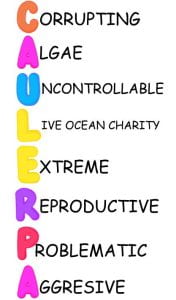In social studies we have been exploring the topic ‘Managing The Environment’. Here we understood that resources are water and we decided to focus on the documentary within Ngapuhi called ‘Restoring the Mauri of Lake Omapere’ The following is what I captured from the documentary.
The Maori owned 66 million acres of land, and 34 million were taken from the pakeha people. Nowadays, the Maori people have less than 4 million acres of land in their hands. There used to be 2500 residences but now unfortunately there are only 80 people living there. They harvested loads of crops like potatoes and they shared it within the community. They got the dead bodies that deteriorated on rocks and buried the bones in the crater of maunga putahi. And the lake was also used for swimming, and for also washing themselves.
In Utakura there used to be 2500 residents, but now they are left with 80 people. They harvest wood, like Kauri, Kahikatea and Totara. The soil was slowly deteriorating through burning. And there was water pollution in the lake. Due to the farmers, potassium cyanide was now in the lake. And because the lake was a major use to the community, they can’t utilize the lake how they used too. They can’t use it for their crops, or drinking, or to wash themselves. Because going into the lake could majorly affect your nerve system and stops oxygen from flowing through to your brain and organs.
There were heaps of Maori people, hundreds if not thousands, and they were gum digging in the gum fields spread across 14 acres of land. Spearing eels were risking because if they went to the wrong parts the other would rise and all the eels would have left by then. The people knew that there was a taniwha lurking beneath the midst of the murky waters. There were some polluted parts of the lake and the pollution all came from the drains of the pakeha farmers. The Maori launched an application to the Maori Land Court to investigate the title of the lake in 1913. Judge Acheson ruled that the bed of the lake did not belong to the Crown and it was Maori owned. Farmers on the lake edge were petitioning to lower the level of the lake because every time it floods not only does the lake expand but they lose out on the farm lands. They had a continuous process of draining the land every time it flooded. There was tension (active tension) with the crown to the extent that he would withhold plans from Maori because that would then frustrate the investigation.
One interesting thing that I found out was that the Ngawha prison was built on top of a swamp and in front of a Pa. But back when the wars were happening, people would go to commit suicide at that Pa. Another interesting thing was, women’s breast milk. If the women were vegan or vegetarian, that meant that their breast milk would have been polluted and they wouldn’t be able to go over the border.
From the information I gathered about the documentary, I learnt that the council in Kaikohe used Lake Omapere, as a water supply for the community, but this was before it was toxicated. While the lake was toxicated, everyone was saying that humans were the biggest pest. Before the lake had a lot of Mauri, but ever since it got polluted, it lost its Mauri. To ensure the lake stays maintained, farmers need to find the right amount of fertilizer, so it doesn’t affect the contamination of the lake. In the water of the lake, there was algae inside, and that made the lake polluted, because in the algae, it consisted of Potassium Cyanide. The algae managed to spread across the whole of the lake, making it harder to be cleaned. Eventually, Carp was added to the lake to help maintain it.
The council utilizes Lake Omapere as a water source for the town of Kaikohe. The Lake provides a significant amount of the town’s water supply, therefore, it’s a reliable resource for the needs of the local community.


